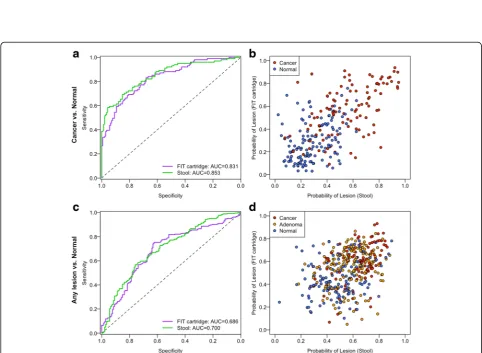DNA from fecal immunochemical test can replace stool for detection of colonic lesions using a microbiota-based model
Full text
Figure


Related documents
Finally, we will conclude with the statement of the Kapustin-Li formula for the duality pairing on the morphisms in the matrix factorization category of ( R, ω ) and discuss
Consider how many adults can safely monitor this type of activity and set a maximum number of participants and a minimum number of required adult chaperones.. If this is a co-ed
The question now becomes how to determine whether this tipper’s sanctioned disclosure in violation of Regulation FD is sufficiently wrongful to trigger insider
In contrast, A β OSK peptide ( c ) did not affect spine morphology at those concentrations.. 4 Spine alteration in APP OSK -expressing tau knockout neurons. a Primary neurons
The basic principle involved in this method is degradation of polymers coated on the drug delivery system by microflora present in colon and thereby causing
The great mistake, he says, is the transformation of labour, land and money into commodities, and then the control of labour and land – and more besides, including food and thought
3WP: 3 Wishes Project; BGH: Brantford General Hospital (Center 5); CNS: Clinical Nurse Specialist; HFX: Queen Elizabeth II Health Sciences Centre, Halifax (Center 7); ICU:
In January 2007, Company management proposed to the Compensation Committee that the Company’s long-term incentive compensation program be modified to provide for 50% stock options